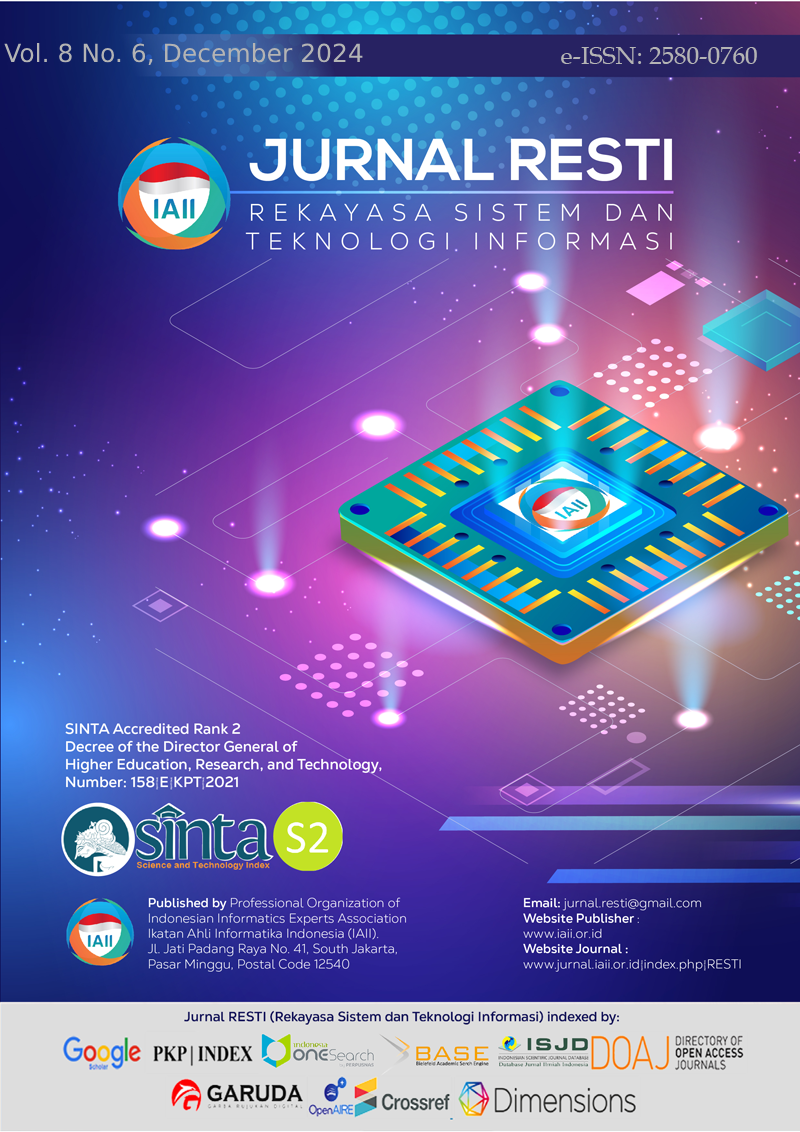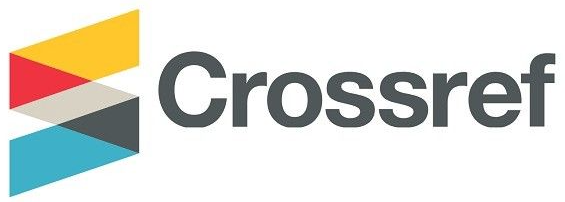Reducing Training Time in Skin Cancer Classification Using Convolutional Neural Network with Mixed Precision Implementation
Abstract
In the field of skin cancer classification, machine learning and deep learning have been extensively utilized, particularly with convolutional neural network (CNN) architectures. However, there remains room for exploration to achieve optimal performance. This study investigates the use of the MobileNetV3Large architecture for transfer learning, chosen for its efficiency in low-power and memory-constrained applications. To further enhance performance, black-hat morphological transformation and oversampling techniques were applied to the ISIC 2020 dataset. Additionally, mixed precision training was implemented to reduce training time. The research aimed to compare the accuracy, precision, recall, F1-score, and training time of models trained with and without mixed precision. The findings revealed that while the model without mixed precision achieved superior performance with accuracy, precision, recall, and F1-score metrics reaching 98%, both models yielded an AUC-ROC of 1. Notably, mixed precision training significantly reduced training time by 1,646 seconds (27 minutes and 26 seconds), representing an 8.39% speed increase. These results suggest that mixed precision can meaningfully accelerate model training while maintaining competitive performance. The practical implications of this research include its potential to improve the efficiency of skin cancer classification models, making them more suitable for real-time clinical applications, particularly in resource-constrained environments.
Downloads
References
A. M. Smak Gregoor, T. E. Sangers, L. J. Bakker, L. Hollestein, C. A. Uyl – de Groot, T. Nijsten, and M. Wakkee, “An artificial intelligence based app for skin cancer detection evaluated in a population based setting,” npj Digital Medicine, vol. 6, no. 1, 2023. https://doi.org/10.1038/s41746-023-00831-w
F. Bray, J. Ferlay, I. Soerjomataram, R. L. Siegel, L. A. Torre, and A. Jemal, “Global cancer statistics 2018: GLOBOCAN estimates of incidence and mortality worldwide for 36 cancers in 185 countries,” CA: A Cancer Journal for Clinicians, vol. 68, no. 6, pp. 394–424, 2018. https://doi.org/10.3322/caac.21492
M. A. Kassem, K. M. Hosny, and M. M. Fouad, “Skin Lesions Classification into Eight Classes for ISIC 2019 Using Deep Convolutional Neural Network and Transfer Learning,” IEEE Access, vol. 8, pp. 114822–114832, 2020. https://doi.org/10.1109/ACCESS.2020.3003890
S. Wilvestra, S. Lestari, and E. Asri, “Studi Retrospektif Kanker Kulit di Poliklinik Ilmu Kesehatan Kulit dan Kelamin RS Dr. M. Djamil Padang Periode Tahun 2015-2017,” Jurnal Kesehatan Andalas, vol. 7, 2018. Available: http://jurnal
R. N. P. Fauziyyah, M. Komariah, and Y. K. Herliani, “Sunlight Exposure and Protection Behavior as Prevention of Skin Cancer in Nursing Students,” Indonesian Journal of Cancer, vol. 17, no. 1, p. 1, 2023. https://doi.org/10.33371/ijoc.v17i1.921
D. A. Nurlitasari, R. Magdalena, and R. Y. N. Fu’adah, “Performance Analysis of Skin Cancer Classification System Using Convolutional Neural Network,” Journal of Electrical and System Control Engineering, vol. 5, no. 2, pp. 91–99, 2022. https://doi.org/10.31289/jesce.v5i2.5691
A. Purwono, A. Ma’arif, W. Rahmaniar, H. I. K. Fathurrahman, A. Z. K. Frisky, and Q. M. U. Haq, “Understanding of Convolutional Neural Network (CNN): A Review,” International Journal of Robotics and Control Systems, vol. 2, no. 4, pp. 739–748, 2022. https://doi.org/10.31763/ijrcs.v2i4.888
Y. I. Sulistya, E. T. Br Bangun, and D. A. Tyas, “CNN Ensemble Learning Method for Transfer Learning: A Review,” ILKOM Jurnal Ilmiah, vol. 15, no. 1, pp. 45–63, 2023. https://doi.org/10.33096/ilkom.v15i1.1541.45-63
M. Faruk and N. Nafi’iyah, “Klasifikasi Kanker Kulit Berdasarkan Fitur Tekstur, Fitur Warna Citra Menggunakan SVM dan KNN,” Telematika, vol. 13, no. 2, pp. 100–109, 2020. https://doi.org/10.35671/telematika.v13i2.987
M. R. Hasan, M. I. Fatemi, M. Monirujjaman Khan, M. Kaur, and A. Zaguia, “Comparative Analysis of Skin Cancer (Benign vs. Malignant) Detection Using Convolutional Neural Networks,” Journal of Healthcare Engineering, 2021. https://doi.org/10.1155/2021/5895156
A. H. Khan, D. N. F. Awang Iskandar, J. F. Al-Asad, and S. El-Nakla, “Classification of Skin Lesion with Hair and Artifacts Removal using Black-hat Morphology and Total Variation,” International Journal of Computing and Digital Systems, vol. 10, no. 1, 2021. Available: http://journals.uob.edu.bh
M. F. Jojoa Acosta, L. Y. Caballero Tovar, M. B. Garcia-Zapirain, and W. S. Percybrooks, “Melanoma diagnosis using deep learning techniques on dermatoscopic images,” BMC Medical Imaging, vol. 21, no. 1, 2021. https://doi.org/10.1186/s12880-020-00534-8
T. Saputra and M. E. Al Rivan, “Klasifikasi Jenis Kanker Kulit Benign Dan Malignant Menggunakan Model Arsitektur AlexNet,” Jurnal MDP, pp. 158–165, 2023.
A. Poornima, M. Shyamala Devi, M. Sumithra, M. V. Bharath, S. Sathishkumar, K. Yogesh, S. S. Upadhyay, and N. K. Sah, “Epoch interrogation for skin cancer detection using convolutional neural network models,” IOP Conference Series: Materials Science and Engineering, vol. 1074, no. 1, p. 012025, 2021. https://doi.org/10.1088/1757-899x/1074/1/012025
S. Singha and P. Roy, “Skin Cancer Classification and Comparison of Pre-trained Models Performance using Transfer Learning,” Journal of Information Systems Engineering and Business Intelligence, vol. 8, no. 2, pp. 218–225, 2022. https://doi.org/10.20473/jisebi.8.2.218-225
J. Rashid, M. Ishfaq, G. Ali, M. R. Saeed, M. Hussain, T. Alkhalifah, F. Alturise, and N. Samand, “Skin Cancer Disease Detection using Transfer Learning Technique,” Applied Sciences (Switzerland), vol. 12, no. 11, 2022. https://doi.org/10.3390/app12115714
E. Duman and Z. Tolan, “Comparing Popular CNN Models for an Imbalanced Dataset of Dermoscopic Images,” Computer Science, 2021. https://doi.org/10.53070/bbd.990574
V. Werner de Vargas, J. A. Schneider Aranda, R. dos Santos Costa, P. R. da Silva Pereira, and J. L. Victória Barbosa, “Imbalanced data preprocessing techniques for machine learning: a systematic mapping study,” Knowledge and Information Systems, vol. 65, no. 1, pp. 31–57, 2023. https://doi.org/10.1007/s10115-022-01772-8
S. R. Nandakumar, M. Le Gallo, C. Piveteau, V. Joshi, G. Mariani, I. Boybat, G. Karunaratne, R. Khaddam-Aljameh, U. Egger, A. Petropoulos, T. Antonakopoulos, B. Rajendran, A. Sebastian, and E. Eleftheriou, “Mixed-Precision Deep Learning Based on Computational Memory,” Frontiers in Neuroscience, vol. 14, 2020. https://doi.org/10.3389/fnins.2020.00406
J. A. Nichols, H. W. Herbert Chan, and M. A. B. Baker, “Machine learning: applications of artificial intelligence to imaging and diagnosis,” in Biophysical Reviews, vol. 11, no. 1, pp. 111–118, 2019. https://doi.org/10.1007/s12551-018-0449-9D. Kartini, F. Abadi, and T. H. Saragih, “Prediksi Tinggi Permukaan Air Waduk Menggunakan Artificial Neural Network Berbasis Sliding Window”, RESTI, vol. 5, no. 1, pp. 39 - 44, Feb. 2021.
Copyright (c) 2024 Jurnal RESTI (Rekayasa Sistem dan Teknologi Informasi)

This work is licensed under a Creative Commons Attribution 4.0 International License.
Copyright in each article belongs to the author
- The author acknowledges that the RESTI Journal (System Engineering and Information Technology) is the first publisher to publish with a license Creative Commons Attribution 4.0 International License.
- Authors can enter writing separately, arrange the non-exclusive distribution of manuscripts that have been published in this journal into other versions (eg sent to the author's institutional repository, publication in a book, etc.), by acknowledging that the manuscript has been published for the first time in the RESTI (Rekayasa Sistem dan Teknologi Informasi) journal ;







